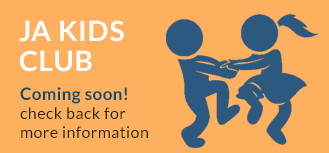ABOUT US: THE STUDY
Firstborns
The Firstborns is a unique project to Jamaica and the larger Caribbean region. Seventeen special children [2] born in July 2011 and their families were selected throughout the island, with all fourteen parishes represented. By visiting each family, Firstborns aims to document the growth and development, home environment and family interaction patterns of each of these unique families and to see how different socio-economic factors might influence children as they develop.
Families were first visited when their children were [3] fifteen months and the Firstborns Project will follow-up with the children using a variety of observational methods, developmental tasks and interviews. The use of mixed data collection methods will enhance the findings in the overall cohort study and provide a richer perspective on the lives and experiences of Jamaican children and their families. In addition, this will provide valuable information on the physical, socio-emotional and cognitive environments of the children.
The families represented a wide cross sector of Jamaican society, that is various:
- Socio-economic backgrounds;
- Housing locations (mixed urban versus rural);
- Maternal/paternal ages;
- Educational achievement; and
- Employment status.
[2] JA KIDS at 1!
- The goals of the first Firstborns visit were to:
- Evaluate the quality of the children’s home environments;
- Assess child health and development outcomes, in relation to family interaction patterns and parenting practices;
- Assess the developmental competence of 1 year old children;
- Measure the type and quality of stimulation given to children in the early years of the family environment using the Home Observation for Measurement of the Environment (HOME) tool; and
- Administer the Ages and Stages Questionnaire (ASQ) to screen the children’s development in the domains of communication, gross motor, fine motor, problem solving, personal social, and overall parental concerns.
Additionally, parents (mother and father if both were present) interviewed to capture more details about the families daily lives (e.g. routines, hopes/dreams, parenting styles). During the first visit, families were also asked to complete the following structured activities and observed for a maximum of five minutes:
- Reading
Families were given three books to choose from; Splash, My First 1-2-3, and Farm Babies Piglet. Families were also allowed to use a favourite book that the child enjoyed. Parents were asked to look at or read the book with their child. - Board Puzzle
Families were either presented with a three-piece board puzzle with animals or an 8-piece board puzzle with fruits. These puzzles were age appropriate with easy-grasp knobs and matching pictures underneath. Parents were simply asked to play with their child using the puzzle board. - Shape Sorter
The shape sorter is a toy that allows children to explore colours, shapes and sizes. It comprises of an orange cross, yellow hexagon, navy blue semi-circle, red triangle, purple circle and light blue square. It also has a house with a door on two sides which may be opened and closed by the user, as well as cut-out of each of the six shapes in the roof of the house to allow the user to push the shape through. Parents were asked to play with their child using the shape sorter. - Colouring
Families were given eight jumbo non-toxic crayons and large picture of an apple and a large picture of a banana to colour. - Stacking Blocks
Families were given a set of nine blocks to play with. These blocks were brightly coloured with portions of pictures on them. If assembled correctly, these blocks would create a scenic picture. - Outdoor Activity
The research team also wanted to observe outdoor play activities. Families were given the choice of using a ball, blowing bubbles or playing outside with their own toys or games.

